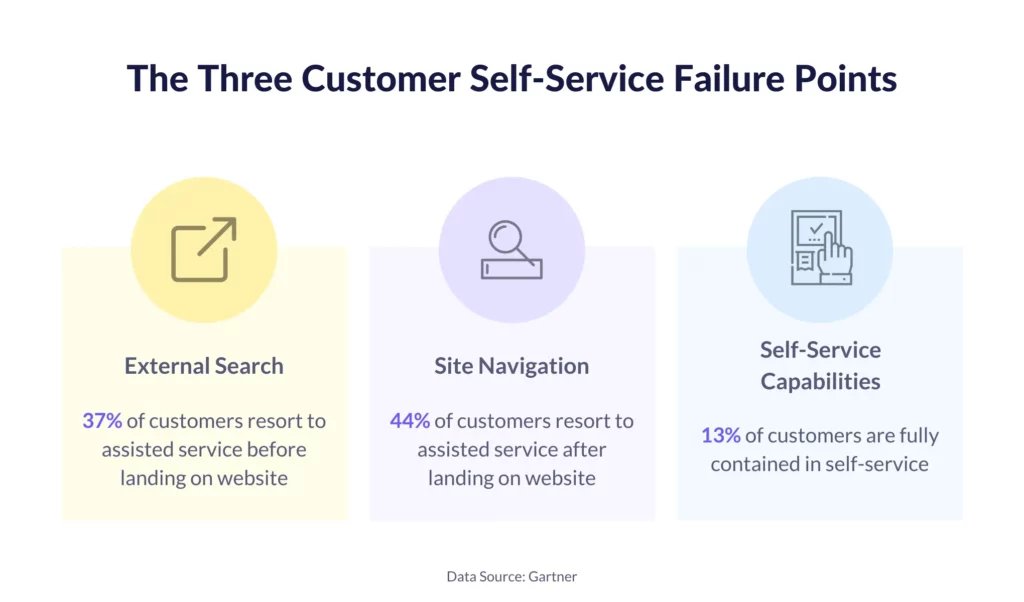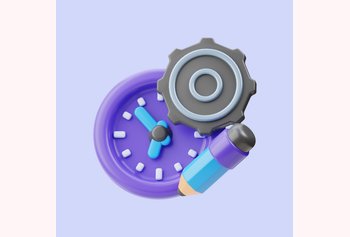Low agent effort leads to higher customer delight.
Take any customer experience guide or framework and you’d notice that it highlights the importance of lowering customer effort.
We can understand why.
96% of customers with a high-effort service interaction become more disloyal compared to just 9% who have a low-effort experience, according to Gartner.
The takeaway is simple: make life easier for your customers if you want them to stay loyal.
But if you look below the surface, reducing customer effort has a lot of moving parts. And the most important one is… agent effort.
Think about it: how can you create low-effort service interactions if your agents are finding it difficult and tedious to get solutions for customer queries?
This is exactly why if you’re a customer service leader, you need to ask yourself:
Are you making life easier for your agents?
Are you able to optimize their workflows and ensure they bring their A game to work daily?
In this post, let’s dive into some effective ways to lower agent effort.
Table of Contents
3 ways to effectively lower agent effort

1. Empathize
Spending one-on-one time with the team plays a very critical role in understanding their goals, pain points, and expectations. In addition, paying attention to their workload will help you come up with practical solutions to reduce the amount of effort they put into day-to-day tasks and find ways to simplify them.
When you start understanding your support team better, it becomes easier to optimize their workflow. How do you eliminate their everyday repetitive work? How do you ensure they don’t spend time on trivial, time-consuming tasks?
A tool like Hiver, for example, allows you to automate repetitive tasks (like assigning queries, tagging customer requests, and so on). Something like this can take a lot of the workload off of your agents’ plates, and improve their productivity.
2. Empower
When your team’s time and effort have been judiciously scheduled, it opens opportunities to learn, grow, and upgrade their skill sets. To ensure accuracy and standard of service, having a common cloud space with shared company resources is a must. Here, agents can refer to the documents to provide timely responses to customers, and also use this information to improvise and come up with solutions.
Add-on tools available in the industry can significantly help enhance agent productivity. For example, Grammarly is an incredible tool that melds into your browser and helps improve the quality of your writing – emails, texts, chat responses, etc. A tool like Grammarly allows agents to focus on delivering exceptional service, and not worry about typos, and incorrect grammar.
So, if you’re leading a customer support team, a good way to boost quality is to provide your agents with all the necessary tools and software for effortless work.
3. Elevate
Elevating your team’s overall performance requires a combination of two things.
Number one is developing a welcoming work environment where each individual is valued and heard. This will foster allegiance to your company and give them the ultimate push to perform to the best of their abilities.
Another essential cog in the wheel is teamwork. When agents cross-collaborate and have open discussions, their individual skills begin to converge, resulting in a high-performing team.
Tips to better support your frontline agents
In a high-stress environment like customer support, helping the team manage their time, effort, and energy should be every customer service leader’s priority.
So let’s break it down and talk about how we can support frontline agents and make their jobs more manageable.
1. Reduce Effort
One of the biggest challenges faced by support teams is managing a constant influx of queries. However, some brilliant tools and software can help reduce agent effort by heaps.
- Often agents have to do repetitive tasks manually, which takes up their valuable time. Here’s where a helpdesk solution like Hiver can be useful. One of its core functionalities is that it automates repetitive tasks like assigning queries and tagging customer requests. More importantly, it works on top of Gmail’s native interface, making it extremely easy to learn and use. So, this ensures that your team won’t have to put in any extra effort in getting used to it.
- Find a tool that helps streamline tasks and collaborate with other teams. A great example is Slack. It allows for cross-collaboration, delegation, sharing of media and other files, etc.
- With customer info residing in a number of tools and channels, agents have to juggle multiple resources within a single day. Jumping through hoops to find the right information can waste a lot of their productive time. By using OSlash to make handy shortcuts for important links, you can help them eliminate this effort and even save them up to 9 hours a week easily.
- Finally, make sure to factor in ‘mobility and flexibility’ so that agents can work on the go and switch between devices (laptop and phone). Hiver, for example, helps you stay connected anywhere and anytime – via its mobile app.
2. Self-Help
An interesting thing about modern customers is that they are pretty independent in terms of finding information. They tend to find their way around and don’t mind a bit of self-help, just as long as the experience is seamless. A case in point is Ikea, a business that resonates with a niche fan base of DIY-ers.

Self-help can significantly impact service teams’ cost to serve and improve customer experience. Self-help is a preferred choice of some customers because it can be availed without the waiting time involved with assisted help. However, self-service options should be carefully designed to give maximum customer delight with minimum effort. Failing to do so will result in customers switching to the more expensive assisted channels.
Self-service doesn’t have to be one thing. Instead, there can be a combination of avenues that show customers the right path.
- Chatbots have always been a popular choice to offer a one-on-one experience while eliminating the need for a human agent. In addition, chatbots and IVR facilities can help solve some basic customer issues, ensuring neither the customer nor the agent has to put extra effort.
Providing quick access to FAQs and a knowledge base will allow an agent to share swift resolutions without breaking a sweat. They can either share links with the customers or even refer to templated responses.
Include an email address if customers have additional questions. While managing email queries involves manual work, it does allow agents some breathing space. Customers will save other touchpoints like phones when there is an option to email. It’s a win-win for both customers and agents.
- Providing quick access to FAQs and a knowledge base will allow an agent to share swift resolutions without breaking a sweat. They can either share links with the customers or even refer to templated responses. You can use Movavi Screen Recorder to capture the screen and provide your customers with video instructions for first-aid troubleshooting.
3. Optimize based on Purpose and Function
An important question to ask yourself is, “what kind of customer experience do you want to provide?”
A well-rounded customer support solution enables agents to seamlessly communicate with audiences across multiple channels. Therefore, knowing your customers’ communication preferences will help you form a plan accordingly.
For example, American Airlines has a Social Media Hub, a team of 30-40 support agents who meticulously track the company’s social media channels for any mentions of queries or issues from their customers. The team works diligently to resolve customer queries with respect to rebookings, missed flights, baggage, refund, etc. A simple instance of being present on your customer’s preferred channels.
Bonus tip: Deflect before it happens!
When you act reactively rather than proactively, your agents end up with an accumulated workload. This is especially true in today’s world where the average support ticket volume has shot up by 16%.
If you notice or identify a potential problem, address it before it escalates. Many companies announce potential issues before they occur, to warn and notify customers. For example, you’ll find cable TV providers, online game companies, etc., proactively addressing issues via public platforms. This is a genius way of deflecting queries. The same applies to positive outcomes. When companies gear up for new launches and anticipate heavy activity, they can pre-plan and brace themselves for impact. Being able to plan gives your support team an advantage.
As the old British Army adage goes, “Proper Planning and Preparation Prevents Poor Performance“.
Wrapping up
Low customer effort is one of the strongest indicators of customer loyalty. In fact, in some ways, it is even more important than customer satisfaction. When customers can quickly achieve their goals, they want to continue doing business with you.
Come to think of it, this is raw human psychology. We are all looking for ways to execute our jobs more effectively and effortlessly. So why should it be any different for support agents?
As the wise men say, “Work smart, not hard!”




































